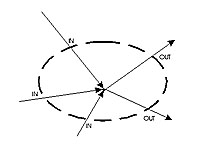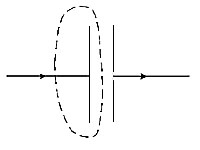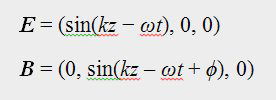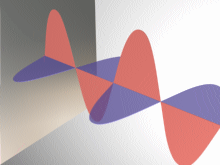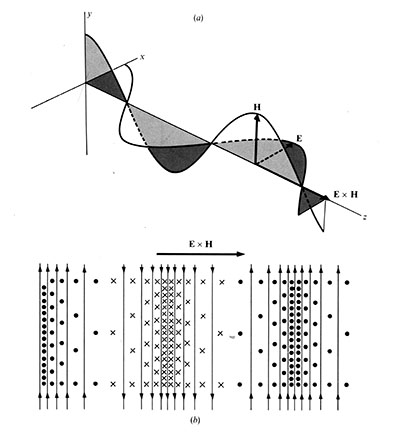|
Note that the radius has been canceled in the equation, which means that the magnetomotive force around the
contour is independent of the radius or, for that matter, even the shape of the contour. A circle is the special
case where r is constant in a curve expressed in polar coordinates and that a non-circle is when r is a
function of the angle. So, whether r is constant or variable with the angle, the total magnetomotive force
is dependent only on the current through the conductor.
This equation tells us that a current passing through a conductor results in a magnetic field and that the strength
of the magnetic field is proportional to the current. It follows that if the magnitude of the current were varying
in any way, the resultant magnetic field would also vary. So, if the current were alternating in a sinusoidal fashion
at some frequency, the magnetic field would also be caused to alternate at the same frequency.
So far we have shown that an alternating current through a wire or conductor results in alternating magnetic
and electric fields around the conductor. So far, we have not shown that these fields radiate or "leave"
the conductor on a distant journey in any way nor do they "snap," "jump," or "hop"
off the antenna as many texts would have you believe.
In order for radiation to be able to occur, we have to prove that magnetic and electric fields can exist without
the presence of a nearby current and that these fields will "move" through space. We will see the idea
of movement of these fields through space as radio waves is really an abstraction. What really happens is more
of a domino effect, which is a demonstration of "propagation."
In order to begin to understand the transition between the fields we have just described, which are referred
to as conduction fields and fields that become free of the wire we must find some way to relate what happens in
a conductor to what happens in space. We will start off by stating Kirchoff's law.
Kirchoff's Law -
The sum of all currents entering and leaving a node or branch point in a circuit must equal zero as illustrated
by figure 1..
|











